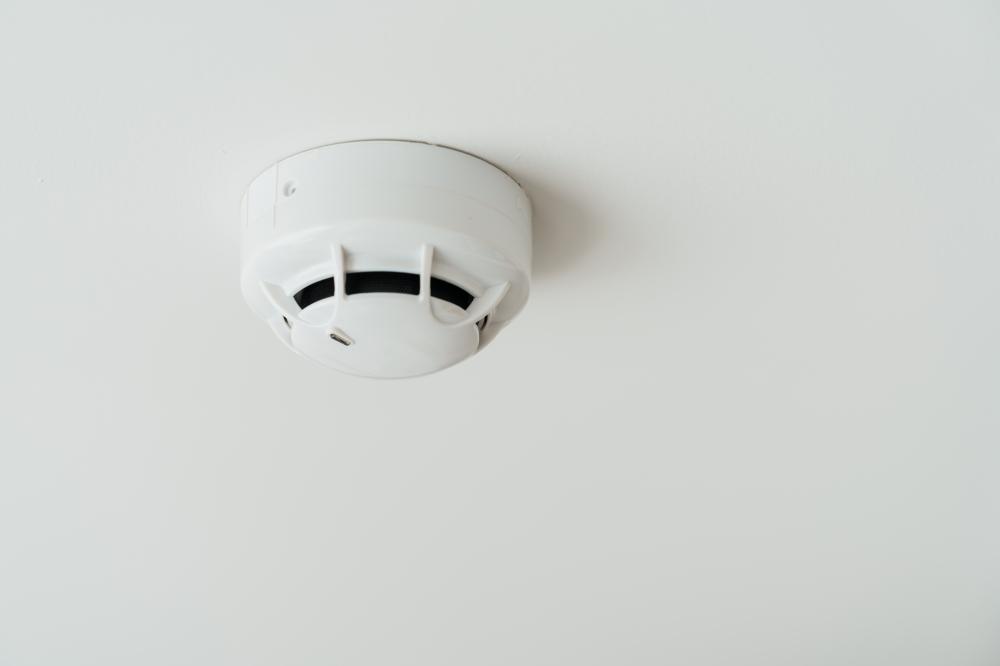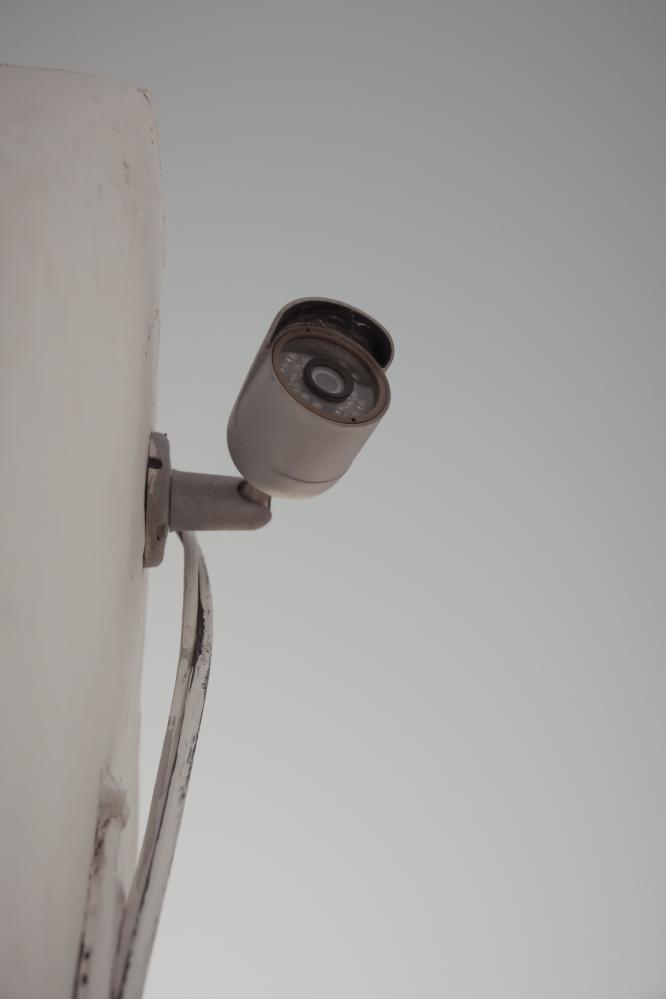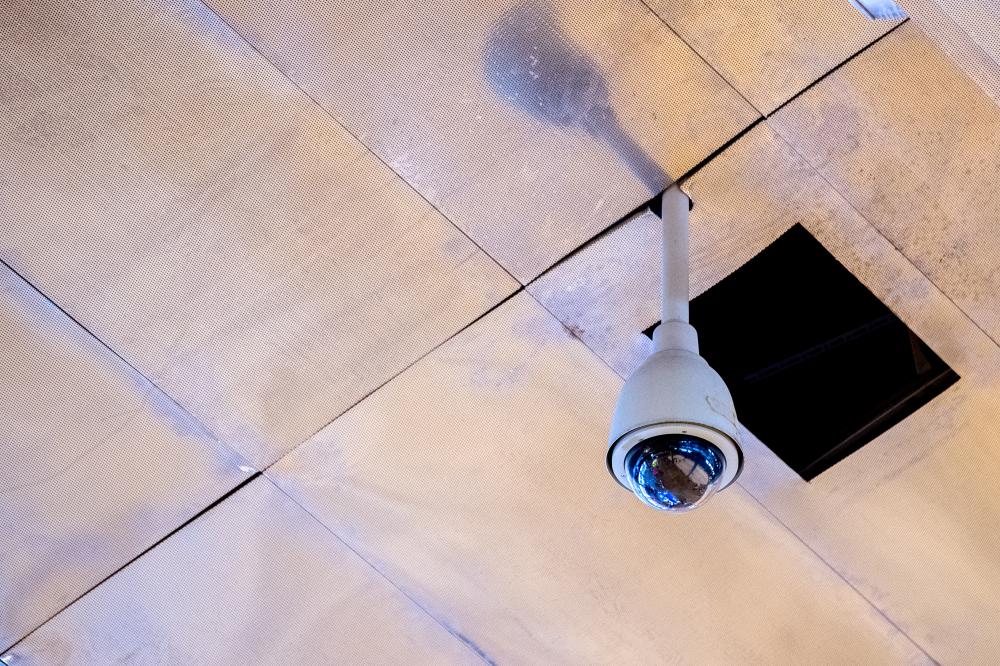
Understanding Wired Alarm Integration
At PRIMA by ARMGUARD, we often encounter clients puzzled about the concept of Wired Alarm Integration and how it can enhance the security and convenience of their smart homes or business establishments. Simplistically, Wired Alarm Integration is about connecting traditional, hard-wired alarm systems to modern smart home ecosystems. This approach ensures that older security infrastructure can still play a vital, active role in safeguarding properties while introducing the benefits of remote monitoring and control.
One of the core advantages we’ve observed with Wired Alarm Integration is the ability to utilize pre-existing security sensors–such as motion detectors, door contacts, and glass break sensors–within a new or existing smart home setup. This not only saves on costs by leveraging what you already have but also minimizes waste, aligning with more eco-conscious approaches to smart home tech.
Benefits of Wired Alarm Integration
Cost-Effective Security Solutions
- Reuse of existing wired sensors and alarms.
- Reduction in the need for purchasing additional, potentially costly wireless sensors.
Enhanced Security with Smart Home Convenience
Incorporating Wired Alarm Integration into your security system enhances traditional protections with the convenience and flexibility of smart technology. Imagine receiving real-time alerts on your smartphone about any security breach or simply being able to arm or disarm your system from anywhere in the world. These are tangible benefits that PRIMA by ARMGUARD has helped numerous clients achieve.
Additionally, integrating wired alarms with smart home systems opens up new possibilities for automation. Your security system can trigger lights, lock doors, or even adjust the thermostat in response to specific conditions, adding layers of convenience and energy efficiency.
Challenges and Solutions in Wired Alarm Integration
Finding the Right Compatibility
One of the initial challenges in Wired Alarm Integration is ensuring compatibility between the old wired systems and new smart home technologies. At PRIMA by ARMGUARD, our approach involves thorough assessment and testing, identifying compatible hubs or bridges that can seamlessly connect these worlds. Solutions such as the Prima All-in-One Security Panel are designed to address these compatibility concerns directly, providing a straightforward pathway to integration.
DIY vs. Professional Installation
For the DIY enthusiasts, Wired Alarm Integration offers a rewarding project with plenty of support and resources available, including our Systems in a Box Kits. These kits come equipped with everything needed for self-setup, supported by user-friendly tutorials. However, for those preferring a professional touch, PRIMA by ARMGUARD’s network of security dealers is always on standby to ensure that your integration process is smooth and effective.
Expanding the Potential of Your Security System
Through leveraging Wired Alarm Integration, homeowners and business operators alike can dramatically enhance the functionality of their existing security systems. It’s a cost-effective method to upgrade to smart security without the need to overhaul the entire system. Our experiences at PRIMA by ARMGUARD have shown time and again that integrating wired alarms with smart environments not only boosts security but also enhances the overall lifestyle, providing peace of mind with the added convenience of modern technology.
In engaging with Wired Alarm Integration, our clients have discovered new levels of interaction with their environments. Security systems become less about a standalone alarm and more about an integrated, interactive component of their daily lives. This shift towards more connected and responsive systems represents the future of home and business security–a future that PRIMA by ARMGUARD is excited to help shape.
Remember, whether you’re considering upgrading your system to include Wired Alarm Integration or starting fresh, the goal is to ensure that your property is as secure as possible while maximizing the benefits of contemporary smart home technology. With the right approach, your security system can offer more than protection; it can offer a new way to interact with and manage your environment.
Understanding Hardwired Security Systems
At PRIMA by ARMGUARD, our journey into the realm of smart security systems has familiarized us with the myriad aspects that constitute effective home and business safety. Among these, the hardwired security system stands out for its reliability and robustness in safeguarding properties. Unlike their wireless counterparts, these systems rely on physical connections between the security cameras, sensors, and the monitoring center. This physical connection ensures a steady and uninterrupted transmission of data, making it nearly immune to the interferences that often plague wireless systems.
Adopting a hardwired security system translates into a commitment to long-term security. Installation might be perceived as more invasive due to the need for running wires through walls and ceilings. However, this one-time inconvenience paves the way for decades of dependability. It’s akin to laying down the foundations of a fortress around your property–a fortress that is impervious to the whims of Wi-Fi signals and more resilient against would-be intruders.
The Advantages of Choosing a Hardwired System
The primary allure of a hardwired security system lies in its unmatched stability. The assurance that your security feed won’t drop at a critical moment because of a router reboot or a Wi-Fi hiccup is invaluable. When seconds count, this reliability could be the difference between thwarting a break-in and being caught unprepared.
Additionally, hardwired systems are inherently more secure from an electronic standpoint. They are less susceptible to hacking attempts that often exploit wireless vulnerabilities. This cyber fortitude is accompanied by a typically higher quality of video feed, as the bandwidth of physical cables far exceeds that of current wireless technologies, allowing for clearer images and faster frame rates. Such clarity is crucial when identifying trespassers or understanding the nuances of a security event.
- Reliability and uninterrupted feed
- Increased electronic security against hacking
- Superior video quality for clearer surveillance footage
It’s important to note, from our firsthand experiences at PRIMA by ARMGUARD, that the initial setup of a hardwired security system, though more labor-intensive than a wireless system, is a one-time investment into your peace of mind. This setup process also presents an opportunity to familiarize yourself with the physical aspects of your property’s security framework, laying the groundwork for easier upgrades or expansions down the line.
Integrating Hardwired Systems with Smart Technology
The evolution of smart home technology has not left hardwired security systems behind. Innovations have enabled these systems to integrate seamlessly with modern smart home ecosystems, offering users the best of both worlds–reliability and smart functionality. Through platforms like PRIMA by ARMGUARD, users can now connect their hardwired security system to their home automation network, controlling it through a single, user-friendly interface.
This integration extends the utility of the hardwired security system, allowing for advanced features such as remote viewing, notifications, and even integrating with lighting or sound systems to deter intruders proactively. It’s fascinating to witness the harmonious blend of traditional security robustness with the agility and intelligence of modern smart home capabilities.
Personal experiences shared within our community highlight the convenience of controlling a hardwired security system from the palm of your hand. Whether it’s viewing live footage while away on vacation or receiving immediate alerts in case of suspicious activity, the synergy between hardwired reliability and smart technology enriches the security experience.
To conclude this section, embarking on the journey of installing a hardwired security system may seem daunting at first. But with the right guidance and an understanding of its benefits, it will soon become clear that this is a worthwhile endeavor. At PRIMA by ARMGUARD, we’ve dedicated ourselves to providing not only the hardware but the knowledge and support needed to make your home or business a safer place.
Choosing the Right Secure Wired Camera Setup
Deciding on the appropriate secure wired camera setup can feel like navigating through a labyrinth, especially for those of us at PRIMA by ARMGUARD who are deeply entrenched in smart security systems. In our experience, the hallmark of a robust secure wired camera setup is not just in its ability to deter potential intruders but also in its capability to blend seamlessly into your daily operations, providing peace of mind without intruding into your life.
First and foremost, consider the camera resolution and field of view. A clear image can be the difference between identifying an unwelcome visitor and a pixelated mystery. Equally important is the camera’s low-light performance–after all, a significant portion of home security concerns arise during the night.
Another tip we often share is the importance of ensuring compatibility with your existing security ecosystem. This synergy between devices enhances your security posture and streamlines management. A secure wired camera setup that integrates well with your overall system will save you time and headaches in the long run.
Installation Tips for Secure Wired Camera Setup
When embarking on the installation of a secure wired camera setup, the journey can often begin with a mix of excitement and trepidation. To ease the process, we’ve distilled lessons learned from countless installations into a few guiding principles.
Planning Your Layout:
Before drilling holes and running cables, take a moment to meticulously plan your camera layout. Consider not only where you need surveillance but also how cables will travel from the cameras to the DVR. Strategic planning here can prevent unsightly cable runs and reduce installation headaches.
Installation Day Preparations:
- Gather all necessary tools beforehand to avoid unnecessary interruptions.
- Enlist a friend or family member’s help. An extra set of hands can make a significant difference, especially when routing cables through tight spaces.
- Test each camera prior to final installation to ensure functionality. This step can save tremendous time and effort by identifying any issues early in the process.
Remember, the goal of a secure wired camera setup is not just to record footage but to act as a steadfast sentinel for your property. By taking the time to plan and prepare, you’re laying the foundation for a security system that stands guard with unwavering vigilance.
Optimizing Your Secure Wired Camera Setup
Once installed, the journey to a secure home doesn’t end–optimization is key. In our quest to provide top-notch security, we at PRIMA by ARMGUARD have found that the true potential of a secure wired camera setup is unlocked through thoughtful adjustment and regular maintenance.
Periodically review camera angles to ensure they cover the intended areas without any blind spots. Adjustments may be needed as seasons change or landscaping grows. Furthermore, maintain a regular cleaning schedule for your cameras. Dust, spider webs, or other obstructions can degrade image quality over time, reducing your system’s effectiveness.
Lastly, keep your system’s software up to date. Security system manufacturers regularly release updates not just for new features but, more importantly, for security enhancements. An updated system is your best defense against evolving digital threats.
A secure wired camera setup, when chosen thoughtfully and maintained diligently, becomes more than just a set of eyes on your property–it becomes a guardian of your peace of mind. At PRIMA by ARMGUARD, we understand the importance of this peace, and it’s our mission to help you achieve it.

What is Wired Alarm Integration?
Wired Alarm Integration is a sophisticated process that involves connecting traditional, hard-wired alarm systems to modern smart home or business ecosystems. It’s like giving your existing security infrastructure a digital upgrade, allowing it to communicate with current technology. This integration enables homeowners and business operators to enjoy the reliability of wired systems along with the convenience and flexibility of smart technology. You can receive real-time alerts, monitor your property remotely, and even automate security responses–blending age-old security practices with today’s technology seamlessly.
Why Choose Wired Over Wireless Systems?
While the allure of wireless systems, with their easy installation and sleek, cable-free look, cannot be denied, wired systems offer unmatched reliability and stability. Imagine a fortress with walls connected by steel, impervious to the whims of Wi-Fi signals. That’s the kind of robust, uninterrupted security a wired system provides. Additionally, wired systems are inherently more secure from hacking attempts, offer superior video quality, and, contrary to popular belief, can integrate quite well with modern smart home technologies. Wired systems are less about choosing the past over the future and more about ensuring the foundation of your security is as solid as it can be.
Can Old Wired Systems Be Made Smart?
Absolutely, and this is where Wired Alarm Integration truly shines. The process involves assessing your existing wired system and then using compatible hubs or bridges to connect it to your smart home network. It’s a bit like finding the right adapter to plug an old, favorite pair of headphones into a new smartphone. Once connected, your old system gains a new lease of life, becoming a smart, responsive component of your household. Systems like the Prima All-in-One Security Panel are designed explicitly for this purpose, proving that even the most traditional systems can be smartened up.
DIY vs. Professional Installation: What’s Best for Me?
This decision largely depends on your comfort level with technology and your time. Wired Alarm Integration can indeed be a rewarding DIY project, especially with the resources and kits available today. Our ‘Systems in a Box’ kits, for instance, come with everything you need to get started, plus user-friendly tutorials. However, if you’re not too tech-savvy or simply prefer to ensure everything is set up perfectly, opting for professional installation might be your best bet. Both paths have their merits, and the choice comes down to personal preference.
Maintaining Your Integrated System: What do You Need to Know?
Maintenance is key to ensuring your wired system continues to function seamlessly within your smart home setup. Regularly check your system’s compatibility with any new devices or updates to your smart home ecosystem. Ensure all software and firmware are up to date, not just for functionality, but also for security. Cleaning your wired components, such as sensors and cameras, will prevent dust from interfering with their operation. Regular maintenance checks, combined with a responsive approach to tech updates, will ensure your system remains effective and secure.
Expanding Your System: What Are the Considerations?
When looking to expand your Wired Alarm Integration setup, the key considerations should be compatibility and scalability. Ensure new devices or sensors are compatible with both your wired system and smart home platform. Planning expansion with scalability in mind will save you from future headaches, allowing your system to grow alongside your needs. Also, think about how new components can enhance not just your security, but also your convenience and lifestyle–perhaps through automation that links security with lighting or climate control, for a start.
How Does Security Enhance Lifestyle?
The integration of wired alarms with smart home technology does more than just protect–it enhances your lifestyle. Imagine the peace of mind that comes from knowing your property is secure, combined with the convenience of controlling your security system from anywhere. Or consider the comfort of a home that not only keeps you safe but also adjusts lighting, climate, and even entertainment based on your preferences and security settings. It’s about transforming a static, standalone security system into a dynamic part of your daily life, enhancing both your security and your quality of living.
Choosing the Right Secure Wired Camera Setup: What to Look For?
Deciding on the right camera setup goes beyond just picking the highest resolution. Consider the camera’s field of view, low-light performance, and how it integrates with your overall security ecosystem. The right camera should not only deter potential intruders but also fit seamlessly into your daily operations, offering peace of mind without being obtrusive. Additionally, compatibility with your existing system ensures a smooth operation and enhances your security posture. It’s about finding the balance between security, convenience, and aesthetic fit within your property.
Optimizing Your Secure Wired Camera Setup: How to Make the Most of It?
Optimization is crucial for maximizing the benefits of your secure wired camera setup. Regularly review camera angles to cover intended areas comprehensively, adjust for seasonal changes, and perform maintenance like cleaning lenses and checking connections. Keeping the system’s software updated is also vital for both functionality and security. By taking these steps, you ensure that your camera setup serves as a steadfast guardian of your property, adapting and evolving with your needs and the changing environment.
Resources
- Cybersecurity and Infrastructure Security Agency (CISA) – The CISA website provides valuable information on cybersecurity, infrastructure security, and emergency communications.
- National Criminal Justice Reference Service (NCJRS) – NCJRS offers research, publications, and resources related to criminal justice, including security systems and technology.
- National Institute of Standards and Technology (NIST) – NIST provides standards and guidelines for improving the security and resilience of information systems.




